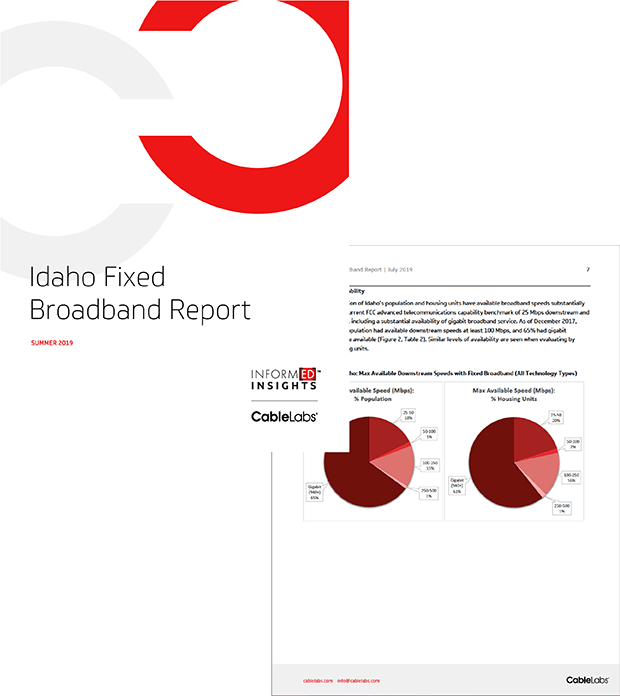SUMMER 2019
Idaho Fixed Broadband Report
The purpose of this report is to evaluate the state of broadband deployment in Idaho. Based on these government datasets, this report finds that, as of December 2017, Idaho has widespread availability across nearly the entirety of the state’s geography, population, and housing units of fixed broadband service that includes all technology types at speeds of at least 25 Mbps downstream and 3 Mbps upstream. However, the widespread geographic availability of fixed broadband in Idaho, as well as in the other similarly situated Intermountain West states, is largely due to the widespread availability of satellite broadband, which is considered by the FCC to have some technical limitations.
The deployment of cable gigabit broadband in Idaho is also representative of the broader cable industry’s commitment to deliver broadband performance well ahead of consumer demand. As of December 2018, cable operators had made available gigabit service to over 80% of all U.S. housing units, up from just 4% in 2016. Looking beyond gigabit broadband service, CableLabs and the cable industry have developed the technologies to provide a viable path to soon deliver symmetrical gigabit and multi-gigabit services, and eventually 10 gigabit symmetrical services, over cable’s hybrid fiber-coax (HFC) networks. In addition to increased speed, cable operators are focused on developing network technologies to reduce latency, enhance reliability, and increase security, known collectively as cable’s “10G” technology platform.
Executive Summary and Introduction
The purpose of this report is to evaluate the state of broadband deployment in Idaho. The report relies on the most recent publicly available data on broadband deployment, as of December 2017. The data are collected by the Federal Communications Commission (FCC) from providers through its Form 477 at the census block level. The FCC releases this dataset, as well as a Fixed Broadband Deployment mapping tool, to the public. For each census block, the Form 477 data identify the broadband provider, the broadband technology type, and the maximum available data rates (downstream and upstream), among other attributes. In order to provide a clear picture of broadband deployment in Idaho, as well as in similarly situated Intermountain West states for comparison, this report utilizes the census-block-level deployment data from FCC Form 477, as well as annual estimates by FCC staff of census-block population and housing units derived from publicly available U.S. Census Bureau data.
The accuracy of the analysis in this report is predicated on that of the underlying FCC Form 477 deployment data. One limitation of this dataset is that the information is collected and released at the census-block level, a level of granularity that can obscure the geographic detail of broadband deployment. In recognition of this limitation and others, the FCC, Congress, and the industry have been working on approaches to develop more accurate and precise broadband deployment data. Of note, in July 2019, the FCC released a draft Report and Order and Second Further Notice of Proposed Rulemaking that proposes the collection of fixed broadband deployment data via polygon shapefiles and would allow for crowdsourcing to supplement the data. Although changes to the data collection method could significantly enhance the granularity and quality of the dataset, the most accurate and comprehensive measure of broadband deployment currently available remains the FCC Form 477 data used herein.
Based on these government datasets, this report finds that, as of December 2017, Idaho has widespread availability across nearly the entirety of the state’s geography, population, and housing units of fixed broadband service that includes all technology types at speeds of at least 25 Mbps downstream and 3 Mbps upstream. However, the widespread geographic availability of fixed broadband in Idaho, as well as in the other similarly situated Intermountain West states, is largely due to the widespread availability of satellite broadband, which is considered by the FCC to have some technical limitations.[1]
For fixed terrestrial broadband service, which includes fixed wireless and wireline technology types but omits satellite, 85% of Idaho’s population (84% of housing units) has access. Idahoans without access to fixed terrestrial broadband at speeds of at least 25 Mbps downstream and 3 Mbps upstream largely reside in rural areas that are challenging for providers to deploy fixed terrestrial service.
In areas where fixed terrestrial broadband service (e.g., fixed wireless and wired technology types) has been deployed, Idaho has substantial availability of higher broadband speeds, with 100 Mbps or higher download speeds available to 81% of the population (78% of housing units) and gigabit speeds available to 65% of the population (61% of housing units). When looking across these dimensions, broadband availability in Idaho is highly comparable to other Intermountain West states.
Within fixed terrestrial broadband service, cable networks are a significant driver to the substantial availability of 100 Mbps or higher broadband speeds, including gigabit service. Cable networks pass approximately 521,797 housing units (72%) in Idaho. Of those housing units passed by cable, 82% have cable gigabit broadband service available as of December 2017. We would expect more recent data (not yet available) to show a further increase in cable gigabit availability, given the continued investment and upgrades being made by cable operators. Similarly, we would expect the speeds offered by other fixed broadband providers to have also increased.
The deployment of cable gigabit broadband in Idaho is also representative of the broader cable industry’s commitment to deliver broadband performance well ahead of consumer demand. As of December 2018, cable operators had made available gigabit service to over 80% of all U.S. housing units, up from just 4% in 2016. Looking beyond gigabit broadband service, CableLabs and the cable industry have developed the technologies to provide a viable path to soon deliver symmetrical gigabit and multi-gigabit services, and eventually 10 gigabit symmetrical services, over cable’s hybrid fiber-coax (HFC) networks. In addition to increased speed, cable operators are focused on developing network technologies to reduce latency, enhance reliability, and increase security, known collectively as cable’s “10G” technology platform.
Background
The analysis in this report is based on the most recent publicly available data on fixed broadband deployment (December 2017 Form 477 data) from the Federal Communications Commission (FCC) and on 2017 census block-level estimates of population and housing units provided by the FCC and derived from publicly available U.S. Census Bureau data.[2] For this report, we adopt the FCC’s current speed benchmark for advanced telecommunications capability—25 Mbps downstream and 3 Mbps upstream or higher—to define fixed broadband service.[3] Under the current Form 477 data collection, all broadband providers including wireline, fixed wireless, and satellite are required to file a Form 477 with the FCC on a semiannual basis. Each provider of fixed broadband service (e.g., wired, fixed wireless, and satellite) has been required to report, at the census-block level, whether consumer and/or business services are offered as well as the maximum available data rates (downstream and upstream) offered for each broadband technology type deployed.[4]
In 2013, the FCC revised the Form 477 data collection method to put in place the current format, in part, to support updating the National Broadband Map.[5] The National Telecommunications and Information Administration (NTIA) originally collected the broadband deployment data and produced the National Broadband Map, but the FCC assumed responsibility for maintaining the National Broadband Map in 2014, though they had not updated the map after including the June 2014 data.[6] Starting in February 2018, the FCC released a new “Fixed Broadband Deployment” map to display more recent Form 477 data, and in December 2018, the FCC decommissioned the National Broadband Map.[7] The FCC’s Fixed Broadband Deployment map was last updated on May 1, 2019, and included data as of December 2017.[8]
In addition to its Fixed Broadband Deployment map, the FCC makes the Form 477 fixed broadband deployment dataset itself publicly available.[9] It includes data on the deployment of fixed broadband services at the census-block level by service providers, maximum available speed (downstream and upstream), and broadband technology type (e.g., satellite, fixed wireless, DSL, cable, fiber).[10] Using this nationwide dataset and publicly available census block-level estimates of population and housing units, this report has been generated to provide an analysis of fixed broadband availability in Idaho.[11]
The accuracy of the analysis in this report is limited to the accuracy of the underlying broadband deployment data submitted by broadband providers through Form 477 and released by the FCC. One limitation of the data is the granularity of the scale used—census blocks. For a particular broadband service, the provider indicates the census blocks that are served, but no information is available as to the extent of service availability within each block. We therefore assume, for purposes of this report, that a provider is willing and able to offer the particular broadband service throughout each census block so designated by the provider. This assumption may overestimate the geographic extent of the broadband provider’s service area for the particular offering. As the FCC notes, a “[broadband] provider that reports deployment of a particular technology and bandwidth in a census block may not necessarily offer that service everywhere in the block. Accordingly, a list of providers deployed in a census block does not necessarily reflect the number of choices available to any particular household or business location in that block.”[12]
In recognition of this limitation and others, the FCC, Congress, and the industry have been working on approaches to develop more accurate and precise broadband mapping data. Specifically, the FCC is planning to vote on August 1, 2019, on an order to revise its broadband data collections to enable more granular and more accurate broadband maps.[13] A July 2019 draft of the Order proposes the collection of fixed broadband deployment data via polygon shapefiles and would allow for crowdsourcing to supplement the data.[14] Similarly, Congress is considering legislation that could help drive the collection of improved broadband deployment data.[15] The industry has also been working to develop new approaches to facilitate improved broadband data collection. For instance, the cable industry has been advocating for the flexibility to submit shapefiles, thereby eliminating the inherent limitation of census-block submissions.16 These or other changes to the reporting framework could significantly enhance the granularity and quality of the dataset, but currently, the most accurate measure of broadband deployment available remains the FCC Form 477 data used herein.
Idaho: State of the State - Fixed Broadband Service
To gain a fuller understanding of fixed broadband service in Idaho, this report examines the availability of broadband service across the state and the maximum available broadband speeds. As of December 2017, using the FCC’s speed benchmark of 25 Mbps downstream and 3 Mbps upstream, or higher, and examining broadband service deployment across all technology types, including satellite, Idaho has widespread availability of fixed broadband service extending to nearly all the geography, population, and housing units in the state. Idaho also has substantial availability of 100 Mbps and even gigabit broadband service, in terms of population and housing units.17 Idaho’s level of fixed broadband availability, and maximum available speeds are highly comparable to other similarly situated Intermountain West states.
Fixed Broadband Availability
Figure 1a shows the geographic reach of fixed broadband service, including satellite, in Idaho. It is available to over 99% of the population and over 99% of housing units. When excluding satellite, fixed terrestrial broadband service reaches 85% of the population, 84% of housing units, and much less of the state’s geographical area (Figure 1b). When limited to only wired broadband service (e.g., DSL, cable, fiber), broadband speeds are available to 82% of the population and 80% of housing units (Table 1).
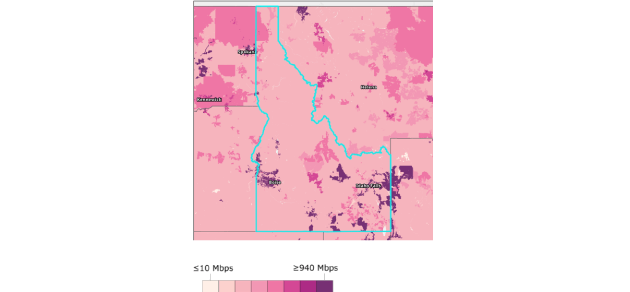 Figure 1a: Idaho: Geographic Availability of Fixed Broadband Service, Including Satellite
Figure 1a: Idaho: Geographic Availability of Fixed Broadband Service, Including Satellite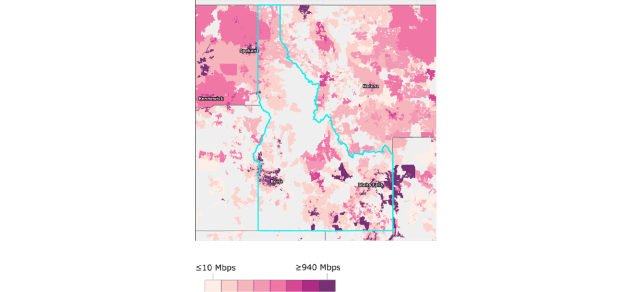 Figure 1b: Idaho: Geographic Availability of Fixed Terrestrial Broadband Service, Excluding Satellite
Figure 1b: Idaho: Geographic Availability of Fixed Terrestrial Broadband Service, Excluding Satellite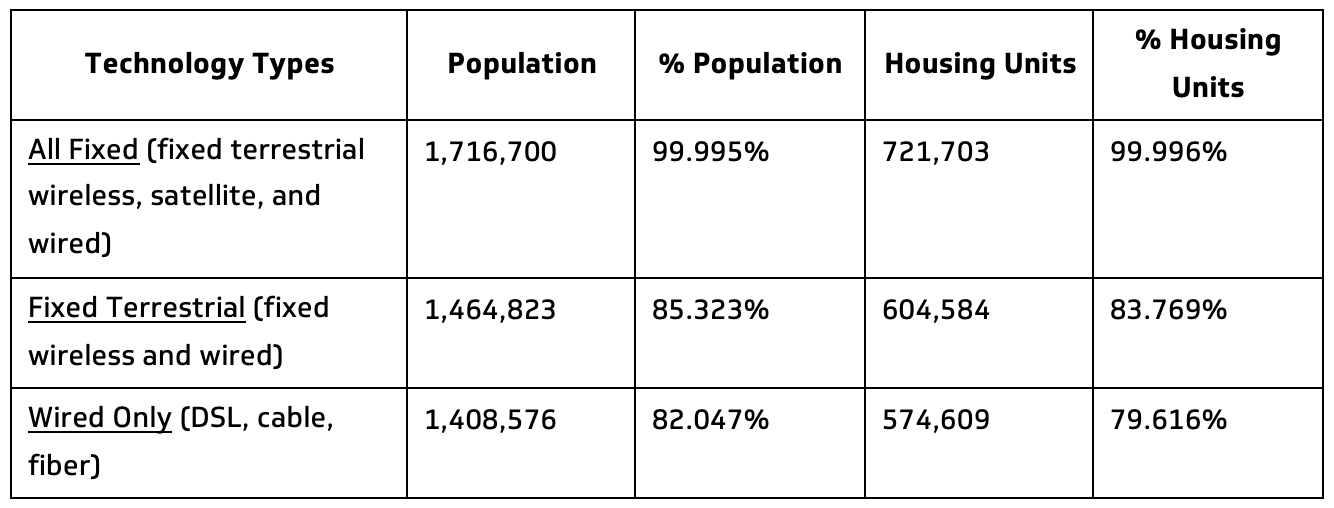 Table 1: Idaho: Fixed Broadband Availability (as of Dec. 2017)
Table 1: Idaho: Fixed Broadband Availability (as of Dec. 2017)The color ramp in Figure 1 indicates the maximum available speed from any broadband provider, with 940 Mbps downstream representing gigabit broadband service. The loss of geographic coverage shown in Figure 1b, with satellite coverage removed, is likely the result of the high proportion of public lands in Idaho.[18]
Max Speed Availability
A significant portion of Idaho’s population and housing units have available broadband speeds substantially higher than the current FCC advanced telecommunications capability benchmark of 25 Mbps downstream and 3 Mbps upstream, including a substantial availability of gigabit broadband service. As of December 2017, 81% of Idaho’s population had available downstream speeds at least 100 Mbps, and 65% had gigabit broadband service available (Figure 2, Table 2). Similar levels of availability are seen when evaluating by percent of housing units.
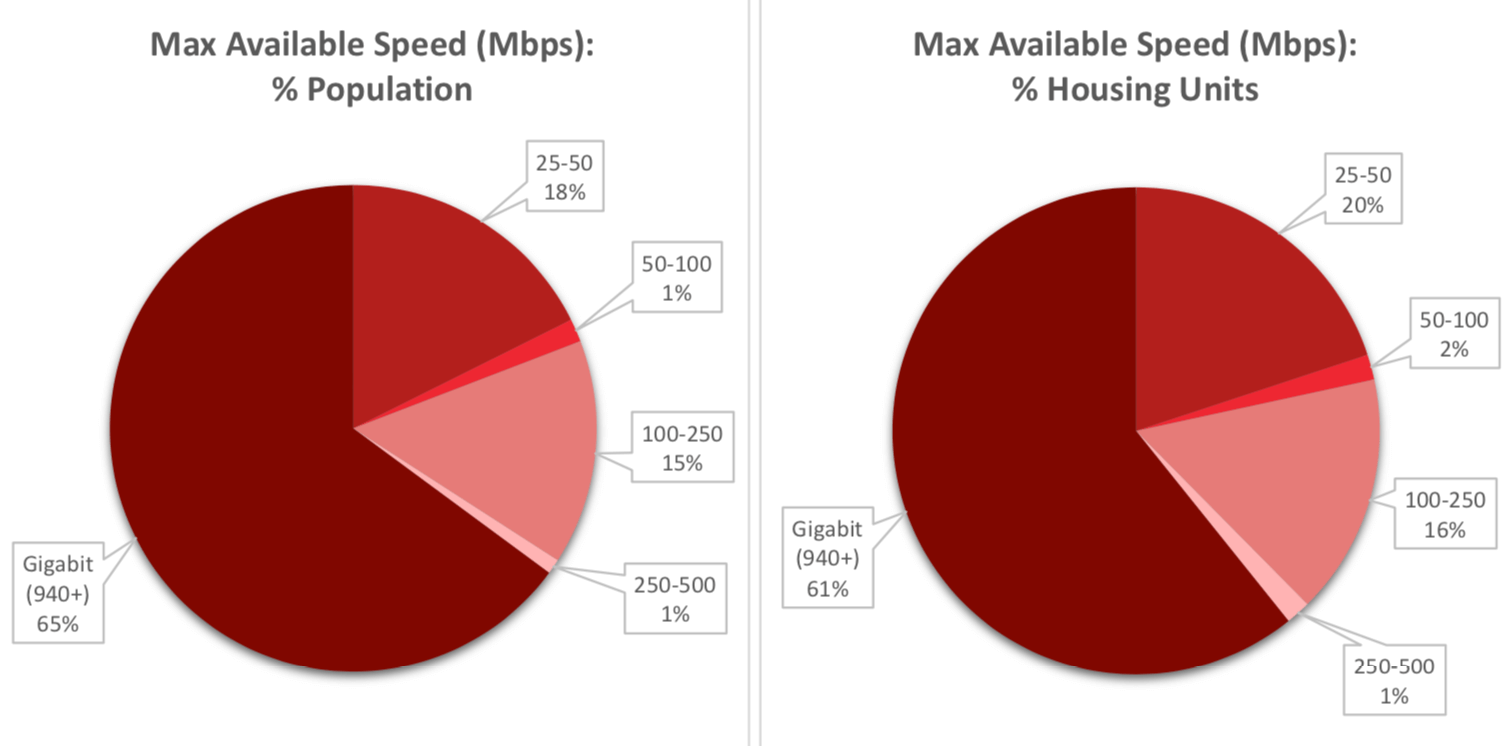 Figure 2: Idaho: Max Available Downstream Speeds with Fixed Broadband (All Technology Types)
Figure 2: Idaho: Max Available Downstream Speeds with Fixed Broadband (All Technology Types)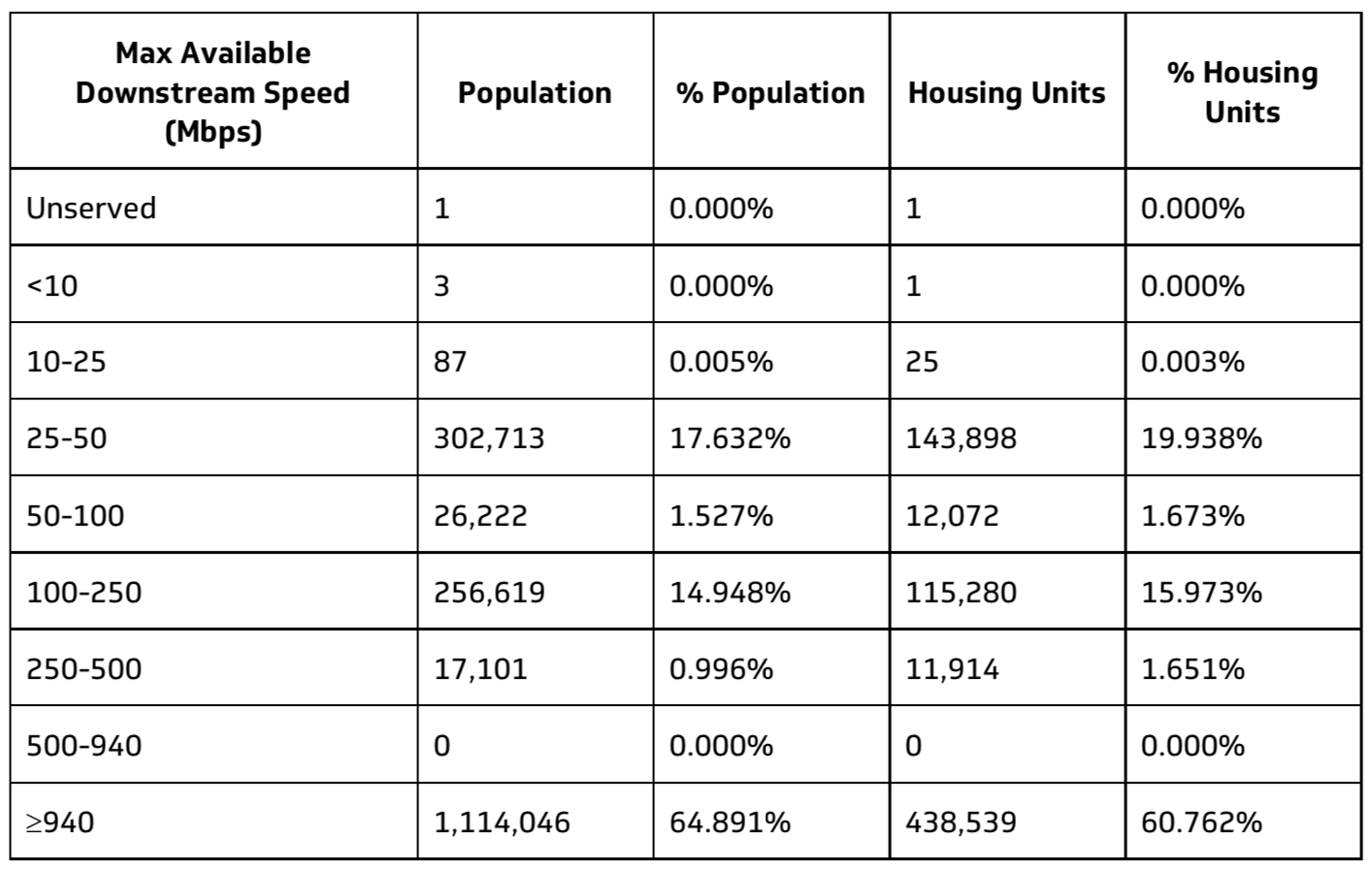 Table 2: Idaho: Max Available Downstream Speeds with Fixed Broadband (All Technology Types)
Table 2: Idaho: Max Available Downstream Speeds with Fixed Broadband (All Technology Types)Comparison: Idaho and Other Intermountain West States
To provide context on the state of broadband deployment in Idaho, this report provides comparative statistics for Idaho and similarly situated states in the Intermountain West—Montana, Nevada, Utah, and Wyoming. Idaho compares well to these states, often near the top, and in no significant way trails these other states (Tables 3 and 4).
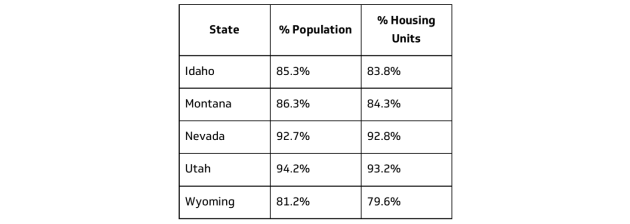 Table 3: Intermountain West: Fixed Terrestrial Broadband Availability by State
Table 3: Intermountain West: Fixed Terrestrial Broadband Availability by State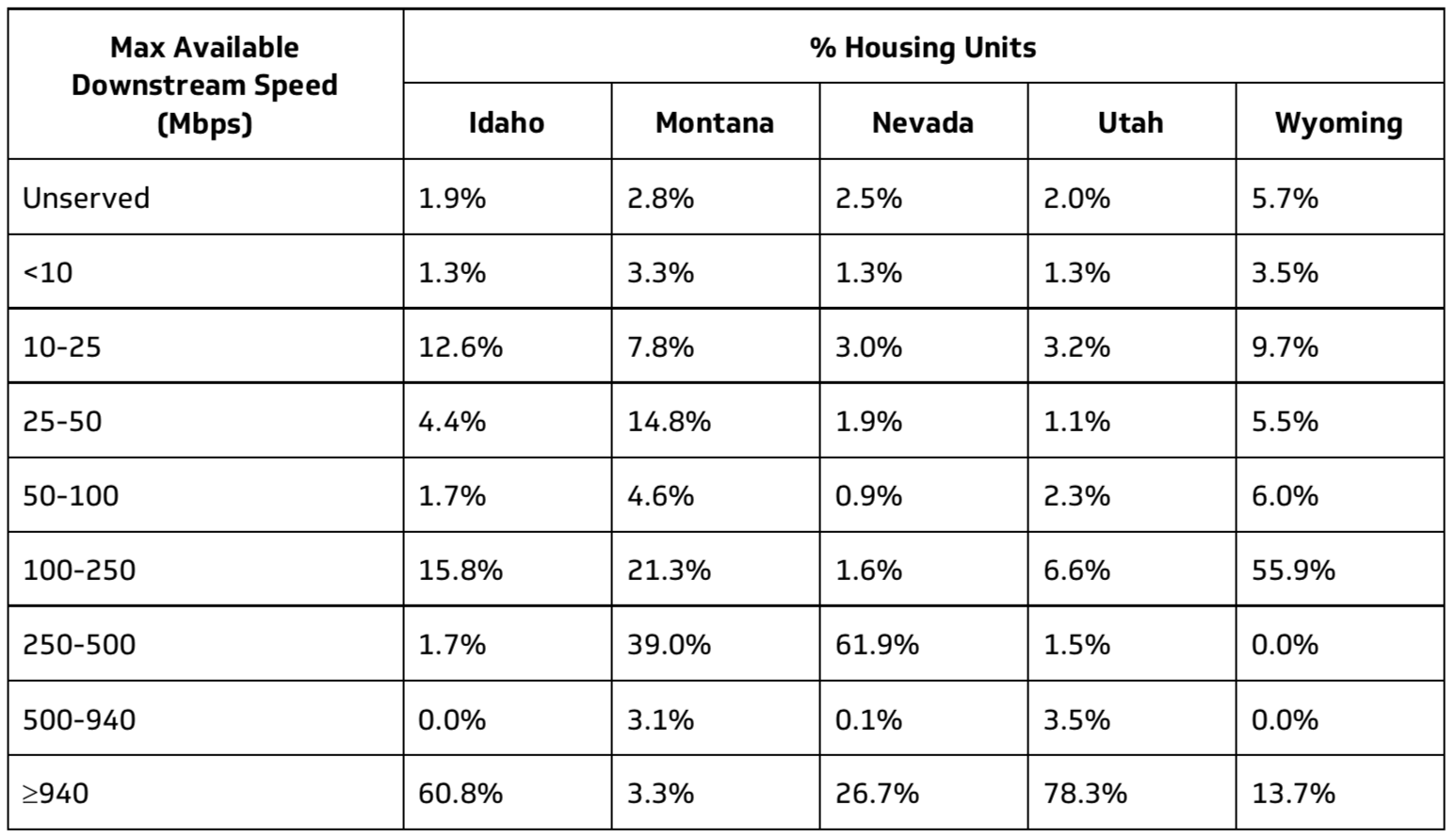 Table 4: Intermountain West: Max Available Downstream Speeds with Fixed Terrestrial Broadband
Table 4: Intermountain West: Max Available Downstream Speeds with Fixed Terrestrial BroadbandCounty by County: Fixed Terrestrial Broadband Service (excluding Satellite)
The availability of fixed terrestrial broadband service varies substantially across Idaho’s 44 counties. Table 5 lists all Idaho counties in order of the proportion of housing units for which fixed terrestrial broadband service (excluding satellite) is available at speeds of at least 25 Mbps downstream and 3 Mbps upstream. Counties range from a high of 99% (Bonner County) to a low of 0% (Clearwater and Camas Counties). The
total number of housing units in each county and the housing density are also provided for context.
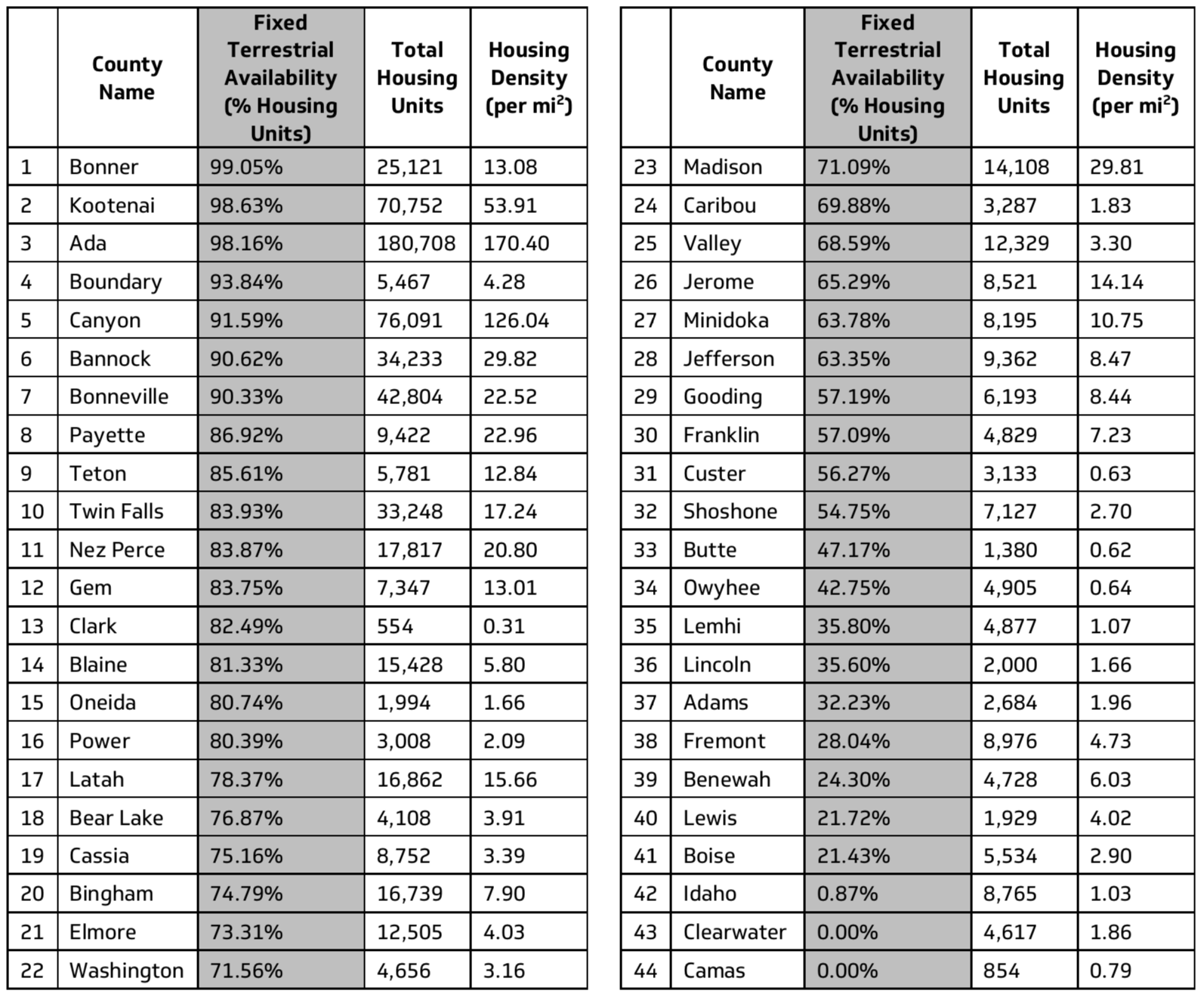 Table 5: Idaho Counties by Percentage of Housing Units with Fixed Terrestrial Broadband Availability[19]
Table 5: Idaho Counties by Percentage of Housing Units with Fixed Terrestrial Broadband Availability[19]Cable Broadband Evolution
Cable broadband providers have deployed and continue to deploy DOCSIS® 3.1 technology, enabling them to offer gigabit service over cable’s HFC networks. Gigabit service builds on cable’s well-established track record of regularly increasing available broadband speeds, as illustrated in Figure 3. As of December 2017, cable networks (CableLabs’ members) passed approximately 521,797 housing units in Idaho, roughly 72.3% of Idaho’s total housing units. Of these housing units, approximately 82.1% had cable gigabit broadband service available as of December 2017. We anticipate that the public release of more recent FCC Form 477 data will show the availability of cable gigabit service continuing to grow.
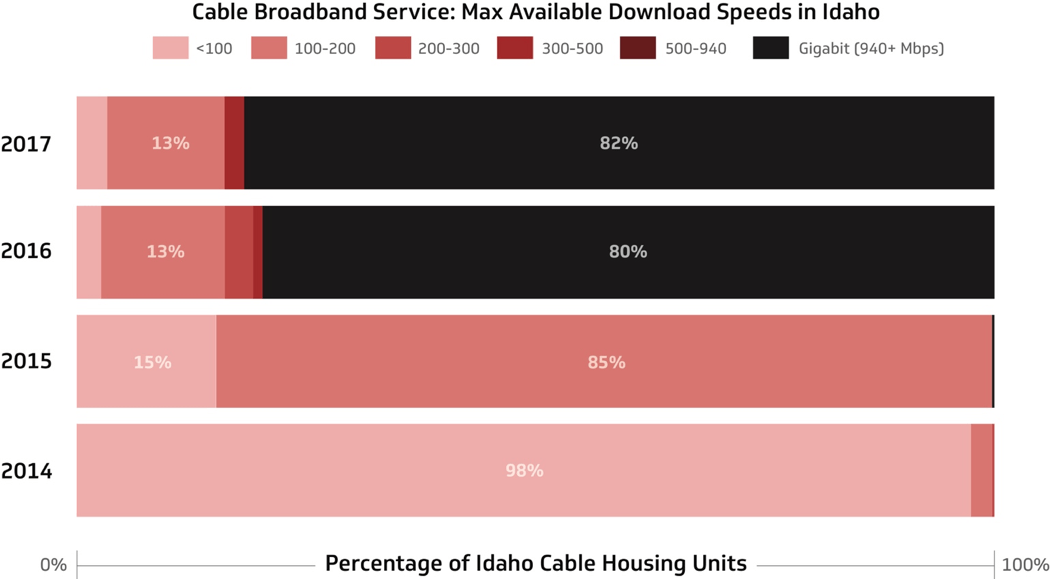 Figure 3: Idaho: Cable Broadband Service Available Speeds over Time
Figure 3: Idaho: Cable Broadband Service Available Speeds over TimeThe Future of Cable Broadband Networks—“10G”
Over the past 35 years, the fastest residential broadband download speeds have increased at roughly a 50% compound annual growth rate.20 As of December 2018, cable operators have made gigabit service available to over 80% of all U.S. housing units, up from just 4% in 2016.21 We are now seeing gigabit service become widely available to consumers—just the latest step in the history of ever-increasing broadband speeds.
The cable industry has long demonstrated its commitment to continually improving cable broadband networks, developing technologies to advance performance and capacity to ensure cable broadband service remains well ahead of consumer demand (see Table 6). To that end, CableLabs and the cable industry is focused on developing its “10G” technology platform—a combination of technologies that will not only increase speed but also reduce latency, enhance reliability, and increase security. With 10G, cable has a roadmap to providing 10 gigabit symmetrical services to consumers.[22]
CableLabs is also working to commercialize its next installment of DOCSIS technology for the coax network, DOCSIS 4.0, which will enable symmetric gigabit and multi-gigabit services. In addition, CableLabs is focused on developing innovative network technologies for fiber (e.g., coherent optics in access) and wireless (Wi-Fi and 5G) and defining optimal network architectures to provide the capacity and performance in each segment of the network necessary for today’s service offerings and those anticipated in the future.[23]
| THE EVOLUTION OF DOCSIS | DOCSIS 1.0 | DOCSIS 1.1 | DOCSIS 2.0 | DOCSIS 3.0 | DOCSIS 3.1 | DOCSIS 4.0 |
|---|---|---|---|---|---|---|
| HIGHLIGHTS | Initial cable broadband technology | Added voice over IP service | Higher upstream speed | Greatly enhanced capacity | Capacity and efficiency progression | Symmetrical streaming and increased upload speeds |
| MAX DOWNSTREAM CAPACITY | 40 Mbps | 40 Mbps | 40 Mbps | 1 Gbps | 10 Gbps | 10 Gbps |
| MAX UPSTREAM CAPACITY | 10 Mbps | 10 Mbps | 30 Mbps | 100 Mbps | 1-2 Gbps | 6 Gbps |
| INITIAL SPECIFICATION DATE | 1997 | 1999 | 2001 | 2006 | 2013 | 2017 |
In developing new and innovative network technologies, CableLabs and the cable industry continually focus on lowering the cost of broadband on a per bit basis in each segment of the cable network, from both capital and operational perspectives. With improving economics, cable operators continually evaluate where and how to extend their services to new areas. Our work in DOCSIS and fiber technologies radically reduces the cost per unit of data transmitted and, in particular, has focused on reducing the costs associated with network maintenance.[24] In addition, we are developing technologies to support the continued advancement of mobile wireless technologies, including advancements in support of 5G and converged network services. As mobile networks shift to small-cell architectures, backhaul connectivity becomes an increasing challenge. CableLabs is working to ensure hybrid fiber-coaxial (HFC) networks are ready to provide the needed connectivity to meet this challenge. We are also revising DOCSIS specifications to more effectively support mobile wireless backhaul services, thereby enabling a more cost-effective backhaul solution for small-cell architectures in LTE and eventually 5G mobile networks.25 The fully converged network of the future will enable a consumer to transition seamlessly from wired to mobile and vice versa, delivering uninterrupted, ubiquitous connectivity, at a lower cost per bit. Merging the traditionally separate fixed and mobile networks into a singular, multi-model communication platform will reduce network complexity, lower capital and operational costs, and improve the quality of service in both reliability and coverage.[26]
Conclusion
Idaho has widely available fixed broadband service, with the vast majority of the population seeing available speeds significantly higher than the FCC’s current benchmark of 25 Mbps downstream and 3 Mbps upstream. As of December 2017, more than 99% of Idaho’s population had available fixed broadband service when examining all broadband technology types, including satellite. Download speeds of 100 Mbps or higher were available to 81% of Idaho’s population, and gigabit broadband service was available to 65%. The deployment of broadband services in Idaho compares well to that of other states in the Intermountain West, with Idaho often near the top of these comparisons and at no time significantly trailing these states.
CableLabs and the cable industry continue to advance the performance and capacity of cable broadband networks to ensure cable operators have the needed technologies to remain well ahead of consumer demand. Cable broadband providers in Idaho have deployed and continue to deploy DOCSIS 3.1 technology, enabling them to offer gigabit service over their networks today. Gigabit service offerings build on cable’s well-established track record of regularly increasing available broadband speeds. As of December 2017, 82% of housing units passed by cable had available gigabit broadband service, and we expect that number to continue to rise as more recent FCC data becomes publicly available. Building on its gigabit services, cable is focused on developing its next-generation “10G” technology platform—a combination of technologies that will not only increase speed but also reduce latency, enhance reliability, and increase security.[27] With 10G, the cable industry has a viable path to providing 10 gigabit symmetrical services to consumers over its HFC networks.
References
- [1] For instance, the FCC has recognized the higher latency and limited capacity associated with satellite broadband services in comparison to terrestrial broadband technologies. See, e.g., FCC, Office of Engineering and Technology, Eighth Measuring Broadband America Fixed Broadband Report, Section 2.D (Dec. 18, 2018), https://www.fcc.gov/reports-research/reports/measuring-broadband-america/measuring-fixed- (“Satellite technologies inherently experience longer latencies since packets must travel approximately 44,500 miles from an earth station to the satellite and back.”); 2019 Broadband Deployment Report, Inquiry Concerning Deployment of Advanced Telecommunications Capability to All Americans in a Reasonable and Timely Fashion, GN Docket No. 18-238, FCC 19-44, para. 28 n.98 (rel. May 29, 2019) (“[W]hile satellite signal coverage may enable operators to offer services to wide swaths of the country, overall satellite capacity may limit the number of consumers that can actually subscribe to satellite service at any one time.”).
- [2] FCC, Fixed Broadband Deployment Data from FCC Form 477, https://www.fcc.gov/general/broadband-deployment-data-fcc-form-477 (last visited July 22, 2019). The FCC also generates and makes public annual population and housing unit estimates at the census-block level based on public data from the U.S. Census Bureau. FCC, Staff Block Estimates, https://www.fcc.gov/reports-research/data/staff-block- estimates (2017 update).
- [3] 2019 Broadband Deployment Report, Inquiry Concerning Deployment of Advanced Telecommunications Capability to All Americans in a Reasonable and Timely Fashion, GN Docket No. 18-238, FCC 19-44, paras. 12-15 (rel. May 29, 2019) (maintaining 25 Mbps download and 3 Mbps upload as the current speed benchmark for broadband service).
- [4] For purposes of this report, CableLabs adopts the FCC’s definition of “fixed” broadband service, which includes wired, satellite, and fixed wireless technologies. See FCC, Fixed Broadband Deployment: “How Should I Format My Fixed Broadband Deployment Data?”, https://transition.fcc.gov/form477/FBD/formatting_fbd.pdf</a (modified Dec. 5, 2016).
- [5] Changes to the Form 477 Data Collection in 2014, FCC (last updated Oct. 29, 2013), https://www.fcc.gov/general/changes-form-477-data- collection-2014.
- [6] See Modernizing the FCC Form 477 Data Program, WC Docket No.11-10, FCC 13-87 (June 27, 2013), https://docs.fcc.gov/public/attachments/FCC-13-87A1.pdf.
- [7] Rich Mansfield, Decommissioning of the National Broadband Map and its APIs, FCC Blog (Dec. 7, 2018), https://www.fcc.gov/news- events/blog/2018/12/07/decommissioning-national-broadband-map-and-its-apis.
- [8] FCC, Fixed Broadband Deployment, https://broadbandmap.fcc.gov/#/ (last visited July 22, 2019).
- [9] FCC, Fixed Broadband Deployment Data from FCC Form 477, https://www.fcc.gov/general/broadband-deployment-data-fcc-form-477 (last visited July 22, 2019).
- [10] FCC, Fixed Broadband Deployment: “How Should I Format My Fixed Broadband Deployment Data?”, https://transition.fcc.gov/form477/FBD/formatting_fbd.pdf (modified December 5, 2016).
- [11] FCC, Fixed Broadband Deployment Data from FCC Form 477, https://www.fcc.gov/general/broadband-deployment-data-fcc-form-477 (last visited July 22, 2019). The FCC also generates and makes public annual population and housing unit estimates at the census-block level based on public data from the U.S. Census Bureau. FCC, Staff Block Estimates, https://www.fcc.gov/reports-research/data/staff-block-estimates (2017 update).
- [12] FCC, Fixed Broadband Deployment Data from FCC Form 477, https://www.fcc.gov/general/broadband-deployment-data-fcc-form-477.
- [13] Digital Opportunity Data Collection, WC Docket Nos. 19-195, 11-10, Report and Order and Second Further Notice of Purposed Rulemaking (Draft), FCCCIRC 1908-02 (rel. July 11, 2019), available at https://docs.fcc.gov/public/attachments/DOC-358433A1.pdf.
- [14] Id.
- [15] Broadband DATA Act, S. 1822, 116th Cong. (2019), available at https://www.congress.gov/bill/116th-congress/senate-bill/1822/text.
- [16] See Letter from Steve Morris, NCTA, to Marlene H. Dortch, Secretary, Federal Communications Commission, WC Docket
No. 11-10 (Feb. 28, 2019) (NCTA Proposal), available at https://www.fcc.gov/ecfs/filing/10221187724594. - [17] For purposes of this report, “gigabit broadband service” is defined as a broadband service with a downstream speed of 940 Mbps or higher.
- [18] As of 2015, 62% of Idaho is owned by the Bureau of Land Management, Forest Service, Fish and Wildlife Service, National Parks, and/or the Department of Defense. See Congressional Research Service, Federal Land Ownership: Overview and Data, Table 1 (updated Mar. 3, 2017), https://crsreports.congress.gov/product/pdf/R/R42346.
- [19] Not surprisingly, a number of counties in Idaho, such as Idaho, Clearwater, and Camas Counties, have little to no fixed terrestrial broadband service availability at or above the benchmark speeds. These counties are characterized by their sparse populations and significant public lands, including wilderness areas and national forests, making the deployment of fixed terrestrial broadband challenging.
- [20] Driving Gigabit Speeds: from Lab to Consumer, CableLabs Inform(ED) Insights (Fall 2018), https://www-res.cablelabs.com/wp- content/uploads/2018/11/28092656/Driving-Gigabit-Speeds-From-Lab-to-Consumer-1.pdf.
- [21] Driving Gigabit Speeds from Lab to Consumer, CableLabs (last visited July 22, 2019), https://www.cablelabs.com/gigabit-internet-speeds/.
- [22] What is 10G? CableLabs (last visited July 22, 2019), https://www.cablelabs.com/10g.
- [23] Driving Gigabit Speeds: from Lab to Consumer, CableLabs Inform(ED) Insights (Fall 2018), https://www-res.cablelabs.com/wp- content/uploads/2018/11/28092656/Driving-Gigabit-Speeds-From-Lab-to-Consumer-1.pdf.
- [24] 10G Technology: Proactive Network Maintenance, CableLabs (last visited July 22, 2019), https://www.cablelabs.com/technologies/proactive-network-maintenance.
- [25] Belal Hamzeh & Jennifer Andreoli-Fang, DOCSIS ® Technologies for Mobile Backhaul, CableLabs Technical Brief (May 2018), https://cdn2.hubspot.net/hubfs/1697621/DOCSIS-Technologies-For-Mobile-BackHaul-May-2018.pdf.
- [26] Experience 10G: Network Convergence, CableLabs (last visited July 22, 2019), https://www.cablelabs.com/network-convergence.
- [27] What is 10G? CableLabs (last visited July 22, 2019), https://www.cablelabs.com/10g.
About Cablelabs
As the leading innovation and R&D lab for the cable industry, CableLabs creates global impact through its member companies around the world and its subsidiaries, Kyrio and UpRamp. With a state-of-the art research and innovation facility and collaborative ecosystem with thousands of vendors, CableLabs delivers impactful network technologies for the entire industry.
About Informed Insights
CableLabs created the Inform[ED] Insights series to periodically address major technology developments that have the potential to transform the cable business and society at large.
The cable industry connects and entertains people across the globe, contributing significantly to economic growth and enabling rich discourse in our countries of operation. Inform[ED] Insights will provide leaders across sectors and disciplines with communications technology facts and insights on which to base decisions of significance.


